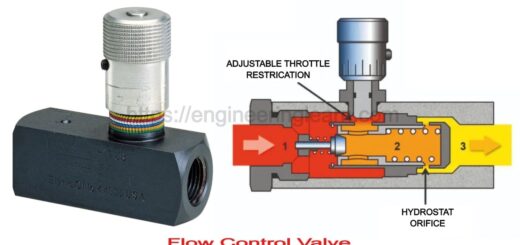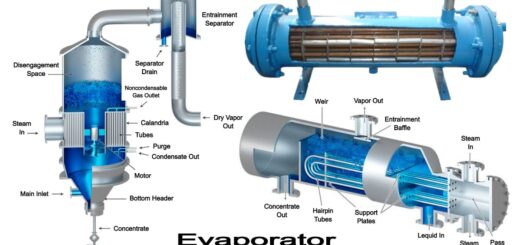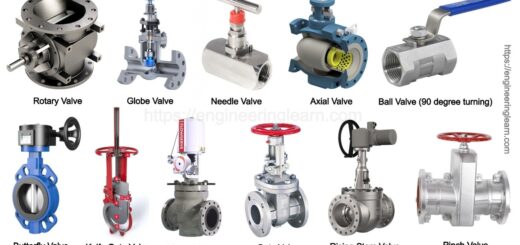18 Types of Burners and Their Uses [Complete Guide]
![18 Types of Burners and Their Uses [Complete Guide]](https://engineeringlearn.com/wp-content/uploads/2023/05/Burners-1024x539.jpg)
Introduction
18 Types of Burners and Their Uses [Complete Guide]: – Need to utilize burners to convert fossil fuel energy to thermal energy in various tanks, heaters, and even gas combi boilers yet you don’t know the type, limit, capacity, cost, and specifications that suit your purpose.
What is a Burner?
A burner is a mechanical device that utilizes energy from a fuel source to power a heating element which is utilized to support combustion reactions for heating fluids, chemical reactions, transformation of matter, and so on. Burners produce the source heat in boilers, heaters, and even tank-less water heaters and go about as the core of each heating system. They spray or shower the fuel (gas, heavy oil, diesel fuel) and blend it in with the air, pass it through a spreading part, and moving forward ignite it by a flash in the combustion chamber to produce the heat required by a boiler or heater.
Types of Burners
There are a few types of burner styles accessible for cooktops, each with its qualities. Below are various types of burners made sense briefly mentioned underneath: –
1. Regenerative Burner: ( Types of Burners )
This kind of heating element is most commonly utilized on one-burner stoves or cooktops with at least two burners. They are not viable for small stoves since it doesn’t provide adequate heat for one burner, and they are too large to even think about fitting on top of a solitary pot without altering the top of the stove. These units can be genuinely costly to operate since they use fans that draw more electricity than different kinds do. Since heat is produced slowly and held in the thermal mass of the stove, more heat is accessible for cooking during overcast, windy, or cool climates.
2. Direct Fired Burner: ( Types of Burners )
The direct-fired burner is a heating element that gets exceptionally hot and heats the air around it, which then heats food. This kind of warming element is for the most part appropriate for one-burner stoves, on account of its small size. It is likewise useful while cooking vessels are put on top of an overturned bowl to reflect heat into the vessel or in a non-insulated fireplace.
3. Air Staged Burner: ( Types of Burners )
The air-staged burner is a more proficient and more secure option in comparison to the radiant burner. Rather than utilizing flames, the air stage forces heated air through holes that spread heat over a larger area than that of a radiant burner. Solid-surface cooktops, for example, those with an air-staged burner don’t work admirably with cast iron or steel frying pans. Be that as it may, this issue can undoubtedly be solved by placing one more pan on top of the frying pan to create an insulating barrier.
To utilize your griddle on your reach yet at the same time as cooking on solid-surface cooktops, consider purchasing parts with aluminum or copper cooking surfaces all things considered; they conduct heat similarly also, yet their metal surfaces are viable with induction range cooktops.
4. Self-Recuperative Burners: ( Types of Burners )
Self-Recuperative burners are that can utilize the waste heat of the flame for recuperative purposes. The exhaust gases are taken in and are further utilized to heat the air which is coming in. This way the furnace operating efficiency is improved while diminishing fuel utilization by half. They can be utilized at higher temperatures than gas burners.
5. Radiant Tube Burner: ( Types of Burners )
The tube burner is comprised of a nozzle, through which the gas enters, and an open flame comes out. The radiant tube burner is faster than different types of burners since it takes into consideration higher flow rates of gas. When energy is transferred into these units, that allows them to reach high temperatures at a quick pace. Most radiant tube burners accompany a few different jets that permit the user to change the size of the flame for various types of cooking jobs. Some even have infrared capabilities to provide the most extreme efficiency.
6. Single-Ring Burner: ( Types of Burners )
A single jet is encircled by an external ring of flames that emits from its external edges instead of its middle. Food will in all likelihood cook evenly across the cooking surface because of the smaller distance between each point on the ring. While it likely won’t be as quick a radiant tube or single-ring burner should cook to the end quickly and be prepared for serving sooner than numerous types of burners. Very much like the single jet burner, food prepared on a single-ring burner could overcook effectively in the event that if not attended to constantly on the grounds that maintaining a constant temperature over such a large area is a difficult task.
7. Single-Jet Burner: ( Types of Burners )
A single jet radiates flames from its external edges as opposed to from the center. Compared with different kinds of burners, this style doesn’t provide in any event, heating between various parts of the cooking surface in light of the fact that the flame can’t cover each inch equally because of variations in pressure and flow rates all through the system. In light of this uneven distribution of heat, food cooked on a single jet burner will frequently cook more rapidly at certain points than others, which can require steady consideration and adjustment.
It can require some time before these units reach their most extreme temperature since they have to run at a lower gas flow rate than different styles to maintain an all the more even distribution of heat.
8. Dual-Jet Burner: ( Types of Burners )
This type of burner emits flames from two separate ports near its end, as opposed to along its external edges or at its center. One jet act as a pilot light while the other goes about as the main flame source for your cooking area. Food cooked on these units ought to have even heat distribution on the grounds that the two jets are supported by one small pilot in the middle between them, which ought to forestall any large fluctuation in one or the other direction while at the same time cooking because of increased or diminished gas flow rates happening all the while with various jets. These units can take longer to heat up than different styles of burners, since the main flame is supported by a smaller pilot light.
9. High Thermal Release (HTR) Burners: ( Types of Burners )
HTR burners are faster to heat up, which makes them great for home cooks who have very small additional time. HTR units additionally distribute their heat equally across the cooking surface, so you ought to have the option to keep up with the ideal degree of cooking temperature without agonizing over hot spots or cold areas where food probably won’t cook accurately. HTR systems appear to have just been placed on smaller-size cooking burners up until this point, so home cooks are likely to restrict selection with regards to this kind of unit.
The HTR style burner emanates flames from different sides (2 sides) and its center, which could make it little hard for home cooks to utilize on the off chance that the cookware they are utilizing doesn’t fit flush to each side of the unit.
10. Open Fires: ( Types of Burners )
Typically, these units are made using enameled steel and painted black for a rustic appearance. Since you could utilize an open fire in essentially any situation, this design is one of the most flexible available cooking burners. In the event that you don’t have a burner or an oven, however, you actually need to have the option to cook food for yourself or your family, open fires can get the job done and allow you to cook and serve right from one unit. As they are not enclosed, you can’t cook for a very long time, and the flame only supports itself with a small pilot light. These units can likewise leak gas or leave residue on the lower part of your cooking vessel, which increases the risk of fire while cooking constantly with no real way to control it.
11. Older Style Burners: ( Types of Burners )
Home cooks used to use these kinds of stoves for their cooking needs, until new hardware was designed with further improved technologies and new styles were invented. One of the top benefits of utilizing an older style burner is that you can generally get your hand on one effectively and they are moderately cheap, so it very well may be smart to have one of these stoves around for an emergency or for occasionally heating snacks. These burners additionally emit flames from all sides of the cooking surface, which could make them simpler to use than specific kinds of cookware.
Older style burners frequently have an open flame, and that implies you can’t turn down the heat or cook for quite a while in light of the fact that it could pose a fire hazard. The flames additionally emit from all sides of the cooking surface, so it very well may be hard to get closer to the centre where you could require more heat without getting burned by the rise in temperature.
12. Integrated Burners: ( Types of Burners )
Integrated burners accompany a porcelain top that is heated by the flame underneath to prepare your meals in a convenient way in one unit. One benefit of utilizing a integrated burner is they for the most part have more surface space than different styles of gas stove burners, which makes it simpler for you to prepare larger meals together without occupying space on your kitchen ledge. The style additionally permits you to take advantage of each of the four cooking surfaces while setting up your next meal, rather than waiting until another burner cools down before you can cook your next dish.
Integrated burners are likewise effective, and that implies you don’t need to continually refill the tank with fuel at whatever point you use it. Moreover, in the event that something occurs and a piece breaks in the unit, for example, a knob falling off, it may be basically impossible to turn off your gas stove until an expert arrives to fix the issue.
13. Low Emission Burners: ( Types of Burners )
Lower-emission burners are quite possibly the most effective type that anyone could hope to find on gas ovens nowadays. They consume less fuel than different styles of cooking units, and that implies you save money at the pump while you cook with them, regardless of a few minor upfront expenses when you buy this kind of burner unit for your kitchen. Low-emission burners likewise disperse heat all the more equally across your cooking surface, making it simple to make delicious meals without stressing over the ingredients being burnt to a crisp.
Although low-emission burners are an efficient type of gas stove burner, they come with a few drawbacks that could hold you back from wanting to use them in your home. For example, on the off chance that you have tall cookware, the flames will require additional space to rise higher off the cooking surface so it can heat correctly without being obstructed by your pot or pan.
14. Ultra-Low Emission Burners: ( Types of Burners )
These types of burners work by reducing or diminishing dangerous gases emitted into the atmosphere when they are turned off, which is perfect for helping reduce greenhouse gas emissions in your home consistently. One advantage of using this style of stove burner is that it attempts to reduce carbon dioxide and other harmful gases emitted or radiated while setting up your next meal, you can utilize less or no cleaner while scrubbing plates after dinner.
Moreover, ultra-low emission burners additionally heat up rapidly at whatever point you really want them – meaning you won’t need to sit around idly prior to cooking your next dish on the fly. One detriment to utilizing this style of burner is that it probably won’t be pretty much as broadly accessible as different kinds of burners, you will probably have a harder time finding new parts and accessories for your unit assuming something turns out wrong.
15. Hot Plate Burners: ( Types of Burners )
Hot plate burners are a kind of burner that you could track down in the chemistry lab of your school, or maybe in a restaurant that needs an additional cooking element for preparing their next meal. This style of burner have some distinct features as compared to other burners, since it has no pot support on top, But underneath the heating element. One benefit of utilizing this style of burner is they require no knobs or handles on top to control the temperature or fire while cooking, and that implies there are no parts of the unit that can break down and leave you without a stove until a replacement shows up.
Furthermore, hot plate burners additionally work fast when turned or switched on in light of the fact that they heat up where you really want them to fill in when you turn them on. One drawback of utilizing a hot plate burner is on the grounds that there are no knobs or handles as well as safety features like different styles, it tends to be hard for the average individual to make cooking adjustments mid-use if needed.
16. Gas and Diesel Burners: ( Types of Burners )
Gas and diesel burners basically work the same way by utilizing gas or diesel fuel to run their heating element, which then, at that point, heats up when turned on after ignition. One benefit to utilizing this style of burner is they are inexpensive as compared to stove burners since they generally just require a tank of gas or diesel fuel to work properly, which means there are no extra expenses for powering the unit while preparing dinner consistently.
Another benefit is assuming you have small kids who need some additional supervision while cooking, these kinds of units ordinarily have no moving parts that can inflict harm in the event that somebody gets their hand excessively near the flame. The only inconvenience to utilizing this type of burner is it very well may be harder to find replacement parts on the off chance that they break down or need a tune-up.
17. Baffle Burner: ( Types of Burners )
A Baffle burner is an alternate style of stove burner that works by diffusing the gas or electric flame into numerous smaller ones that are then spread across the cooking surface – meaning you should purchase a special pan or pot designed explicitly for this style. One benefit to utilizing this kind of burner is on the grounds that there are countless smaller flames, so you won’t need to stress over food burning excessively fast or unevenly like with other cooking methods. Another benefit is on the off chance that you are trying to diminish how much time you spend in the kitchen on the grounds that your family needs less attention while preparing dinner, this kind of burner will assist with making your life more easier by saving you time.
One drawback to utilizing this style of burner is it usually costs more than different kinds of units since you should purchase a special pan for cooking, and the actual unit costs more cash at first.
18. Electric Burners: ( Types of Burners )
Electric burners work as a stove by using electricity as their principal power source, and that implies it for the most part has different levels of heat control and an electrically operated flame rather than a gas one. One benefit to utilizing this style of burner is that it works by heating a coil that transforms into a gas flame, you won’t have to worry or stress about your unit emitting or emanating harmful gasses into the environment when you turn it off for a brief time.
Another benefit is on the grounds that there are no moving parts to this style of burner, it is more durable and less inclined to break down. One disadvantage to utilizing this style of burner is that it usually costs more than different kinds of units in light of the fact that the electric heating component uses electricity as its principal power source.
Conclusion
There are various types of burners out there available in the market today. Contingent upon your necessities and requirements you can figure out which kind is best for you, and ideally, as discussed above, burners can assist with settling on that choice easier! Ultimately, the types of burners that you use ought to fit the reason that it is expected for. You ought to continuously consider factors, for example, the design, cost, and sort of utilization prior to choosing the burner or boiler.













